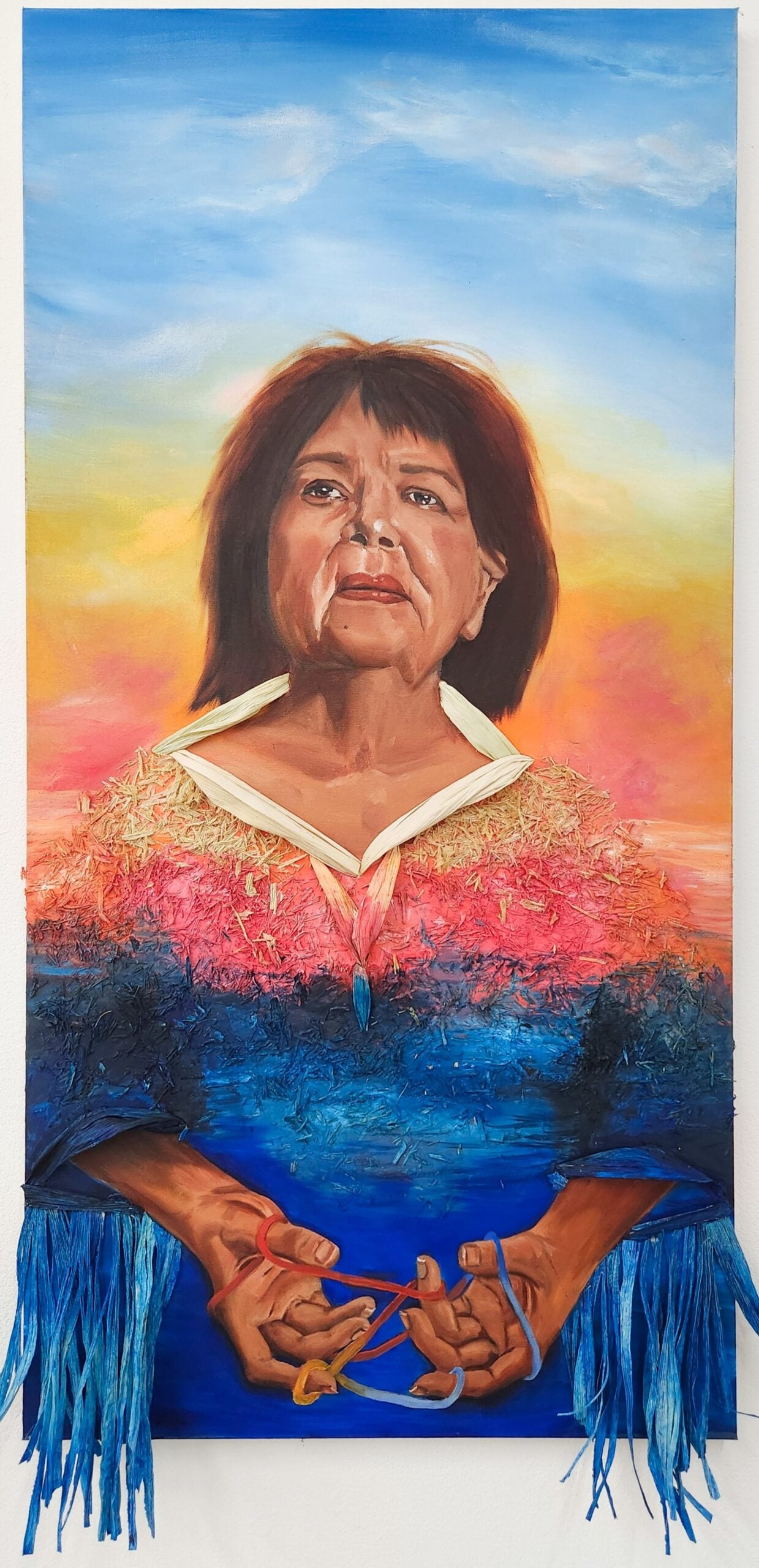Wilma and Selu
“Wilma Mankiller was born in Tahlequah, Oklahoma but relocated to San Francisco due to the Bureau of Indian Affairs’s Relocation Policy. As a young woman, she joined Richard Oakes in the Occupation of Alcatraz and then served as director of Oakland’s Native American Youth Center. She moved back to Oklahoma in 1977 where she led a project to construct a 16-mile waterline over a 14-month period in the small Cherokee community of Bell, which provided water to 200 families. In 1985, Mankiller was elected to serve as the first female Principal Chief of the Cherokee Nation. Under her leadership, infant mortality declined, educational achievement rose, and housing and healthcare improved. She was recognized by President Bill Clinton for these great works in 1998 when she received the Presidential Medal of Freedom, the nation’s highest civilian honor.
Mankiller passed away from pancreatic cancer in 2010. This piece was inspired by her bravery in the face of change and struggle, as well as her constant advocacy for women’s rights. The use of corn husks was inspired by Selu, the first woman according to the Cherokee creation story, who was created from corn and bled to feed her people. Mankiller’s pose in the portrait was derived from the Women of All Red Nation’s (W.A.R.N.) logo, a feminist group that advocated for the protection and betterment of Native American women’s rights.”
Emily Eid is a sophomore pursuing a BFA in Art with a minor in Russian. She primarily paints with oils but has recently been exploring sculpture. Her goal as an artist is to share her perspective as a disabled person and to raise awareness about disability discrimination and medical malpractice.
You can view Emily’s portfolio here.
